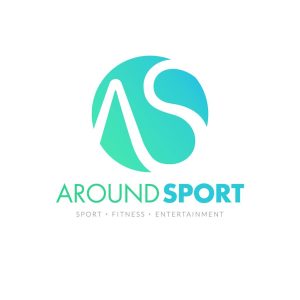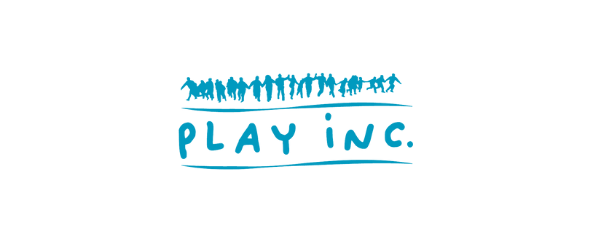HLA
AROUND SPORT – THE PIU’ SPORT
- Brief description
- Context and needs
- Activities and rules
- Location, environment and equipment
- Method
- Side Activities
- Target
- Impact
The Più Sport activity lasts 4 years. It starts when the child is 4 years old and ends when he is 8. In these 4 years we propose many MOTOR AND SPORTS ACTIVITIES that go to stimulate motor skills of each child. All the multi-purpose activities are proposed on 4 elements: water (pool), land (different gyms), sand, outdoor (Nature). After the Più Sport activities the child will have with him a “motor luggage” which allows him to choose the sport he prefers (having already tried and known different sport activities: for example FOOTBALL, VOLLEYBALL, BASKETBALL, HANDBALL, RUGBY, TAEKWONDO, BEACH TENNIS, ATHLETICS, etc.).
Enter in the +Sport Activities 1 or 2 disabilities each group (ratio 1-2/10)
For both age groups of 4-5 years, the activity is “game motricity”. An important goal is to play with basic motor schemes and then develop motor skills of each child that will use to live with fun and pleasure the knowledge of the various sports (which will happen in school age, 1-2 elementary) .
ADAPTATION TO THE SITUATION. Children who attend Più Sport course are constantly brought to adapt to the situation, which is given by the environment, the time and by the space that changes depending on the activity. This makes the child acquire strong flexibility in adapting quickly to the situation and get involved without fear or worry.
INCREASING SELF-ESTEEM AND SELF-CONFIDENCE, recognizing OWN IMPROVEMENTS and the increase of own motor abilities.
LEARNING TO LISTEN TO YOURSELF AND OTHERS. Recognize your own emotions, which are born naturally when you play. To cure conflict as an opportunity for self-knowledge and growth.
The diversity of the environments and of the stimuli make the activity inclusive, especially in the aquatic environment and in Nature ( see Montessori).
The activity is divided into groups: 4-5 years and 6-7 years; 3 times a week in which each lesson is developed as a preparatory activity to a different discipline.
The activity is focused on the body (knowledge of one’s own body) through:
– the GAME, from the simplest to the most complex (where the first rules and roles must be respected)
– the FREE EXPLORATION of one’s own movement;
– LISTENING TO THE EMOTIONS, born from the encounter with other people.
In the activity are explored every form of movement, developing the BASIC MOTOR SCHEMES (walking, rolling, jumping, running, crawling, grabbing, climbing) through games, routes, in different environments and situations: the gym, the sand, from the forest to the pool water, also moving from activities with music.
Free exploration in oriented setting
Children freely explore the aquatic space where different materials have been prepared in order to stimulate their curiosity and orient them to different motor patterns.
The Game of the Fox and Chickens
The chickens move freely in the farmyard (pool), when the fox (educator) enters, they must try to escape by going to save themselves in the henhouse (spaces delimited at the 4 corners of the pool).
- Internal or external field.Educational pool and large pool;
- Thematic gyms ( martial arts, dance, etc.);
- Indoor sand fields;
- Wooded area.
- Include max 1 or 2 disability for the group.
- Obliquity: all participants must experience the perception of the psychophysical well-being that motor activity produces. Every athlete must have the opportunity to train to the maximum of his potential, living some moments of slowdown as wealth.
Example: free exploration in an educational pool with preset settings. Every child helped by the element of water will have the opportunity to make the circuits at the maximum of their potential and mood at that precise moment.
Fairness: Create exercises in which the final gratification is present (for example goal shooting) and everyone can have the chance to reach it. Example: climbing through the use of ropes on trees (with different difficulties). Each child can try the pleasure to achieve the same result (the top of the tree) through the use of different ropes.
- Tool: Use the game in all its forms, as a “prince” learning tool. (G.P, G.E., G.S, G.P.)
- Share with all the technical staff, society and family the sporting and social goals of the inclusive activities.
- Più sport Events with other teams where we dedicate a part of the event exclusively to the inclusive game to allow other associations to live the potential of the inclusive game.
- “Everyone inside”: Once a month, the activity is open to the reference adults of the child (parents, uncles, grandparents). This is an opportunity to get involved and rediscover the taste of playing together, discover, share joys and difficulties of diversity.
- Cultural conferences of “education to inclusion”: moments in which you share with the people of the territory experiences, results and future goals of inclusive sport.
Males and females from 4 to 8 years.
Exponential growth of:
- Emotional intelligence (empathy)
- Know how to manage the needs of the disabled player
- Mathurity (both of non disabled and disabled children)
- Happiness and satisfaction
Increased sensitivity in collaborative actions by athletes during the match
Lowering moments of aggression.
Fair Play.
PlayInc Key Aspects
Più Sport activity uses the diversity of the environment and the activities to bring out the potential of children and their authenticity: from individual to team practice. All this allows the disabled and non-disabled child to focus on their own body and in other moments to focus on collaboration. An ideal educational path in the direction of healthy inclusion.
The coach is stimulated to a transversal training of different environments and disciplines increasing his creativity, his professionalism and his curiosity in learning. In this multi-sport way the coach learns skills, characteristics and strengths of sports and to adapt them in other sports to make the proposal more challenging.
Collateral activities help disabled people’s families to create new links between them and to be included, because discrimination doesn’t stop at the disabled child but falls on all the sociality of family. Collateral activities educate society to share and welcome the disabled child and his family.
Contact the organisation
Contact

Name: Around Sport (AS)
Website: https://www.around-sport.it
Facebook: https://www.facebook.com/aroundsport.it
E-mail: internationalaffairs@aics.info
